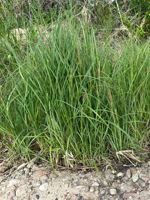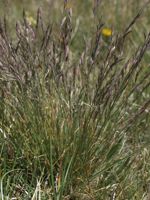Mon-Fri 9am - 5pm Mountain time
Wheat Sedge vs Rocky Mountain Fescue
Carex atherodes
Festuca saximontana
CUSTOM GROW
CUSTOM GROW
Wheat Sedge is a native perennial sedge commonly found in wetlands, ditches, and along shorelines. It thrives in saturated soils, spreading by rhizomes to form large colonies that stabilize both soils and shorelines. This makes it valuable for wetland and riparian plantings.
Its distinctive, wheat-like seed spikes add seasonal character while providing food for waterfowl, and its dense clumps supply cover and nesting habitat for birds and small animals. Together, these traits make Wheat Sedge an important species for enhancing biodiversity and supporting healthy wetland ecosystems.
Rocky Mountain Fescue is a native perennial bunchgrass recognized for its fine-textured clumps and adaptability to harsh environments. It grows well in dry, rocky, and nutrient-poor soils and is highly cold-tolerant, making it well-suited to both prairie and alpine habitats. Its fibrous root system contributes to soil stability and helps reduce erosion on slopes and shallow soils.
Widespread across western and northern North America, Rocky Mountain Fescue is an important component of many prairie and alpine ecosystems. It contributes ground cover and organic matter that support soil function, provides cover for small wildlife, and offers moderate forage for grazing animals. Hardy and versatile, it is used in ecological restoration, naturalization, and habitat enhancement projects, particularly in upland and alpine landscapes.

